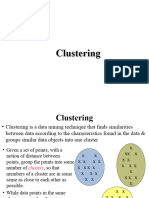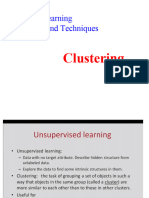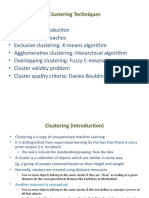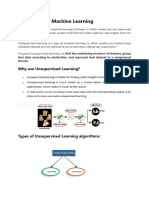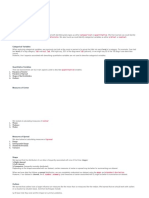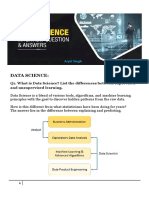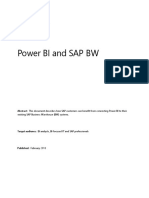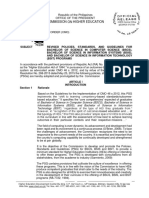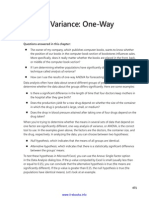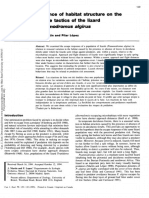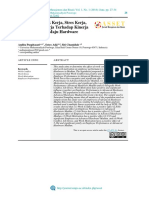0% found this document useful (0 votes)
14 views79 pagesUnsupervised Learning
The document discusses unsupervised learning, focusing on clustering techniques to group similar data points without predefined labels. It covers various clustering methods including K-means, Fuzzy C-means, and Hierarchical clustering, detailing their algorithms, advantages, and disadvantages. Applications of clustering in marketing, fashion, and document organization are also highlighted, emphasizing the importance of defining similarity and cluster quality.
Uploaded by
harshranjan1123Copyright
© © All Rights Reserved
We take content rights seriously. If you suspect this is your content, claim it here.
Available Formats
Download as PPTX, PDF, TXT or read online on Scribd
0% found this document useful (0 votes)
14 views79 pagesUnsupervised Learning
The document discusses unsupervised learning, focusing on clustering techniques to group similar data points without predefined labels. It covers various clustering methods including K-means, Fuzzy C-means, and Hierarchical clustering, detailing their algorithms, advantages, and disadvantages. Applications of clustering in marketing, fashion, and document organization are also highlighted, emphasizing the importance of defining similarity and cluster quality.
Uploaded by
harshranjan1123Copyright
© © All Rights Reserved
We take content rights seriously. If you suspect this is your content, claim it here.
Available Formats
Download as PPTX, PDF, TXT or read online on Scribd
/ 79


























